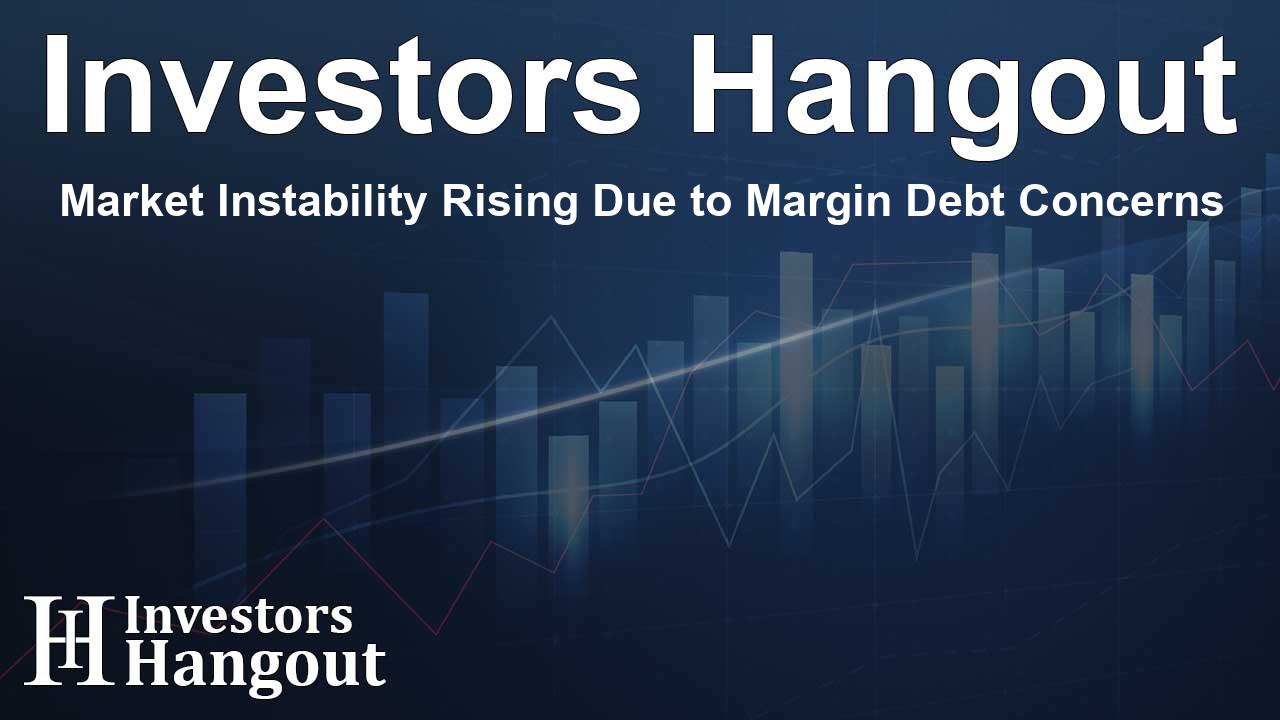Market Instability Rising Due to Margin Debt Concerns

Market Instability Rising Due to Margin Debt Concerns
The dynamics of a bullish market can sometimes lead to unexpected consequences when investor sentiment becomes overly optimistic. Recently, we touched on the rapid shifts in market conditions and how exuberance can create a delicate balance. Several factors inspire this caution, particularly concerning margin debt levels and their potential implications for market stability.
The financial landscape seems to change swiftly, especially when external events create ripples in investor confidence. An example of this was the recent surge of news concerning a new viral outbreak emanating from a laboratory renowned for its virology research. The findings raised concerns reminiscent of past market downturns, reminding investors how quickly conditions can shift.
When markets are buoyant, any unsettling news can disrupt the prevailing optimism. Buyers often reassess their positions, leading to repricing of assets. Such corrections are not unusual, and as we observed, the combination of critical news and an expectant market can foster volatility.
The Importance of Understanding Margin Balances
So, what role do margin balances play in this scenario? Margin debt reflects the funds borrowed by investors to purchase securities, typically backed by their existing investments. This borrowing capacity allows for increased purchasing power. However, it does present significant risks, especially when market conditions become precarious.
When investors employ margin to enhance their positions, they deposit a percentage of the total cost upfront—often 50%, as regulated by federal guidelines. Subsequently, they may borrow additional funds from their brokerage to expand their investment portfolio, increasing both potential returns and inherent risks.
The Risks Associated with Margin Debt
The use of margin can lead to three primary risks. Firstly, a margin call occurs when asset values fall below a pre-set threshold requiring additional funds or sales to cover losses. Secondly, the inability to manage these leveraged positions could lead to substantial losses exceeding the initial investment. Finally, heightened market activity amplified by forced liquidations can escalate volatility and contribute to market downturns.
An Examination of Current Margin Debt Levels
Current trends indicate that margin debt has surged to alarming levels, reflecting a strong bullish sentiment among retail investors. The relationship between margin balances and overall market performance remains pivotal, as both can signal investor confidence or caution, depending on market fluctuations.
Historical data reveals a consistent trend: during previous market corrections, the liquidity tied to margin debt and the overall investor sentiment had converged. This correlation can often signal impending market shifts. When margins are at their peak, and investor confidence is questionable, the stage is set for unforeseen market volatility.
Risks of Increasing Leverage in the Current Market Environment
The alarming increase in margin balances showcases an environment ripe for potential corrections. Investors are taking on higher levels of risk by leveraging their positions through margin trading. This increased speculation can push asset prices higher, but it also sets the stage for significant declines when market sentiment shifts.
One of the concerning aspects of the current financial environment is the increase in risk-taking behaviors among retail investors. Data reflects that investors are increasingly gravitating towards not only margin accounts but also options trading, which introduces another layer of leverage. This combination exacerbates the potential for volatility and market corrections.
Recognizing Warning Signs
Investors should remain vigilant as they monitor their portfolios in light of rising margin levels. A significant warning sign occurs when margin balances decline beneath their historical moving averages, suggesting shifts in investor confidence. A drop in margin balances often signals a broader market consolidation or correction.
While maintaining a bullish stance is essential, it is equally critical to recognize and mitigate risks for potential downturns. As market conditions fluctuate, executing strategic portfolio adjustments—like raising cash reserves, taking profits, and reassessing positions—can provide defensive benefits against unforeseen declines.
In this cautious approach, balancing the overall portfolio to manage risk rather than just chasing returns is prudent. Moving forward, the market may experience turbulence, and a tailored strategy can enable investors to navigate the emerging challenges effectively.
Frequently Asked Questions
What drives increases in margin debt?
Increases in margin debt are primarily driven by investor optimism as they leverage additional capital to amplify returns, reflecting heightened market confidence.
How does margin debt impact market volatility?
Margin debt can increase market volatility by introducing more leveraged positions. If asset prices begin to decline, forced liquidations can lead to rapid selling, exacerbating downward movements.
What should investors monitor concerning margin levels?
Investors should monitor margin levels in relation to historical averages. A significant deviation, particularly a decline below long-term averages, may indicate increased risks.
Is all margin debt dangerous?
Margin debt is not inherently dangerous; it primarily becomes a concern during market downturns when valuations decline and margin calls may force liquidations.
What actions can investors take to mitigate risks associated with high margin levels?
Investors can mitigate risks by diversifying portfolios, raising cash reserves, and potentially decreasing exposure to high-risk assets during periods of elevated margin debt levels.
About The Author
Contact Dominic Sanders privately here. Or send an email with ATTN: Dominic Sanders as the subject to contact@investorshangout.com.
About Investors Hangout
Investors Hangout is a leading online stock forum for financial discussion and learning, offering a wide range of free tools and resources. It draws in traders of all levels, who exchange market knowledge, investigate trading tactics, and keep an eye on industry developments in real time. Featuring financial articles, stock message boards, quotes, charts, company profiles, and live news updates. Through cooperative learning and a wealth of informational resources, it helps users from novices creating their first portfolios to experts honing their techniques. Join Investors Hangout today: https://investorshangout.com/
The content of this article is based on factual, publicly available information and does not represent legal, financial, or investment advice. Investors Hangout does not offer financial advice, and the author is not a licensed financial advisor. Consult a qualified advisor before making any financial or investment decisions based on this article. This article should not be considered advice to purchase, sell, or hold any securities or other investments. If any of the material provided here is inaccurate, please contact us for corrections.
